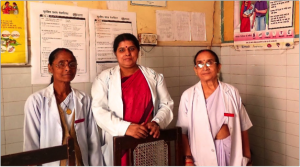The year 2015 has had a mythic aura for me, for over a decade. That’s because it’s the target year for achieving the Millennium Development Goals (MDGs) – the world’s first global blueprint for ending extreme hunger and poverty.
Both carrot and stick, the MDGs framed all our advocacy work.
In a world with no shortage of bad news, it’s been exhilarating to see the dramatic progress towards the MDG targets, notably the three health goals. Today, child mortality has been cut in half, compared with the 1990 baseline. Fewer women are dying in childbirth, or passing HIV on to their infants. Access to clean drinking water has increased, and more girls are in school.
Our collective action really did move the needle – from the corridors of the G8 to the planet’s remotest villages – though much remains to be done of course.
Now the global community is scrambling to agree on a new compact to guide the world – the Sustainable Development Goals (SDGs). The UN-led consultation process is unfolding in a networked world unimaginable to us in the year 2000. It’s a process that’s both more inclusive – and a lot messier.
Whatever final SDG agenda world leaders adopt at the General Assembly this September, we know we’ll have to raise our game to realize it by the target date of 2030.
But how to do so?
Some early answers to this vital question may be emerging from a pioneering research program now underway in 120 public health facilities across Uttar Pradesh – one of India’s most disadvantaged states. The BetterBirth trial is testing WHO’s Safe Childbirth Checklist, which aims to reduce high levels of maternal and newborn deaths by improving care at the times of greatest danger.

Birth attendants on the frontline of childbirth delivery in India’s public hospitals work under challenging circumstances. One on one coaching is the core of a childbirth safety improvement trial involving these health care workers in the northern state of Uttar Pradesh. Source: PSI/Ariadne Lab
How do you get underpaid and undervalued health workers working under conditions of chronic scarcity to change their behavior?
The checklist is the brainchild of Dr Atul Gawande, a leading physician and author who is overseeing the BetterBirth trial in collaboration with the Indian government, the Bill & Melinda Gates Foundation and other partners.
It’s been a privilege to collaborate with the principals in describing this remarkable experiment in real time – and to discover the surprising killer app catalyzing change under daunting circumstances. As we search for a North Star that will guide our future action, it’s an insight we have much to learn from.
Here is their story.




Great post, the checklist is a remarkable initiative from all points of view. It empowers healthcare workers in even the most unprivileged circumstances and will save untold numbers of lives.